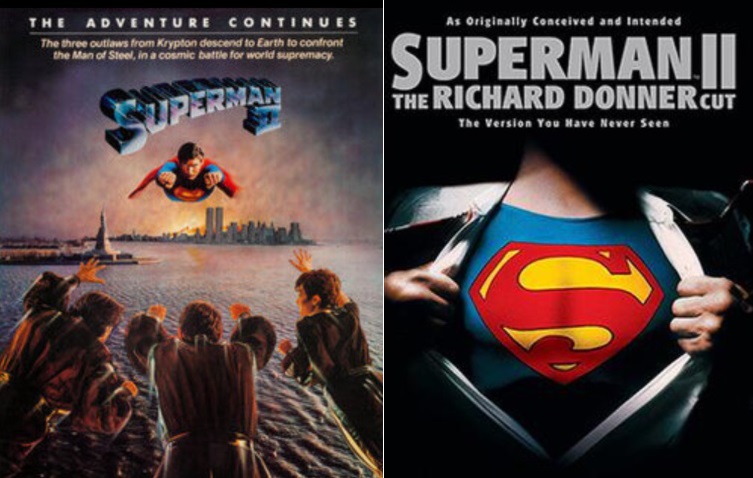
I was always a big fan of the 1978 film version of “Superman”, starring the late Christopher Reeve. I saw it in theaters when it first came out and loved both the film and Reeve in the title role. Besides a stellar cast that also included Gene Hackman, Marlon Brando, and Margot Kidder, the film benefited from a screenplay co-written by Godfather author Mario Puzo and a memorable score by the great John Williams.
Two years later, in 1980, I was ecstatic when “Superman II” was released and I enjoyed it immensely. I didn’t have much use for III and IV thereafter, but I considered the plot lines of I and II to be so seamlessly intertwined that, together, they constituted a single episodic cinematic experience. That was director Richard Donner’s intention. Donner had always viewed both films as an epic two-part adaptation of the Superman comic book series. And it was Puzo’s intention as well, given that he was hired to pen both “Superman” and “Superman II” (additional writing credits went to Robert Benton, David Newman and Leslie Newman). The complementary character of these films has often led me to watch them consecutively.
Nevertheless, the sequel’s release was embroiled in great controversy. Donner was shooting both the 1978 film and its sequel at the same time. He had essentially completed 75% of the principal photography for the sequel while working on the 1978 original. Tensions were running so high with studio executives who were concerned that if “Superman” bombed at the box office, there would be no sequel. And so, they halted production on “Superman II”.
As it turned out, the 1978 film was a smashing success with both critics and audiences. Indeed, in 2017, the film was selected for the National Film Registry by the Library of Congress.
But things were so strained between Donner and Warner Bros that the studio ultimately trashed Donner’s version. Many people involved with the production declined to return once Donner was let go. The studio signed director Richard Lester to helm “Superman II”. To be credited as director, however, Lester had to refilm many of Donner’s scenes, while creating entirely new ones. The serialization wasn’t sacrificed but Lester’s version had more comedic content. Due to delays in filming, some of Donner’s footage was used in the final theatrical release, which caused continuity flaws. Indeed, a careful examination shows that even the physical appearance of some of the actors differs at various points in the film since Donner’s footage and Lester’s footage were shot two years apart.
Moreover, all sorts of legal issues plagued the production once refilming had begun. Reeve had enormous reservations over Lester’s appointment and had already moved onto other projects—including the lovely Somewhere in Time (1980), which he completed filming only days before he was to be on set yet again for the Superman sequel. Reeve successfully renegotiated his contract. Things were not as successful with Marlon Brando, who sued the producers for $50 million claiming he had not gotten his percentage of the 1978 film’s gross revenues. He forbade the producers from using his image in the sequel. Even John Williams was incensed working with Lester, and while his main theme is used in the sequel, film scoring responsibilities were handed over to Ken Thorne.
Still, the sequel was a box office and critical success. But the controversy continued long after the film’s release. Fans clamoring for the original Donner version of the film were instrumental in creating a bootleg restoration that circulated on DVD. Warner Bros threatened to sue—to no avail. In the category of “If You Can’t Beat Them, Join Them,” the studio finally greenlit a Richard Donner Director’s Cut of the film, and restoration began in 2004. Most of John Williams’s film cues were reused from the 1978 film, along with previously unreleased and unused cues. By November 2006, the restored film was screened before the Director’s Guild of America and a full-scale DVD, Blu-Ray, and HD DVD release followed.
Until today, I had never seen the Richard Donner version of “Superman II.” Though I was already very familiar with the Lester theatrical cut, I watched both films back-to-back, and found myself entranced with the Donner version. I was especially pleased that all the scenes with Marlon Brando were restored, since the Brando estate gave the studio permission to use the footage. For me, this was a huge improvement over the theatrical release. That’s not a criticism of Susannah York, who appears as Superman’s mother in both “Superman” and the theatrical release of “Superman II”. It’s just that the link between Superman and his father is crucial to the plot and continuity of both films. The Donner version also presents heightened chemistry between Reeve and Kidder. While I missed the Eiffel Tower sequence that Lester created toward the beginning of the theatrical release, I was still very pleased with the Donner restoration.
To say more will ruin the surprises for fans. I will only say that the dual viewing experience was instructive and entertaining. Fans of “Superman” and “Superman II” should watch the films (all three of them!) and decide for themselves.
